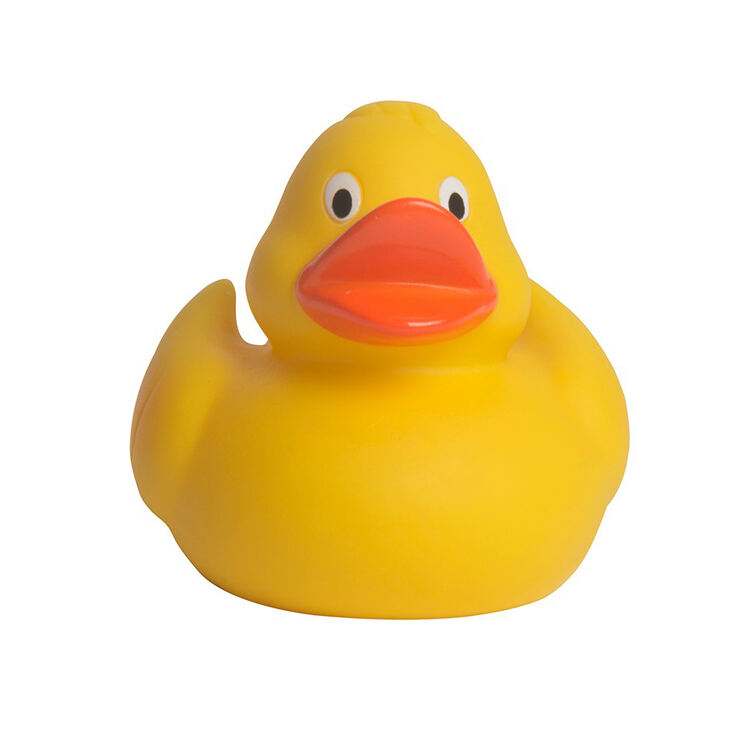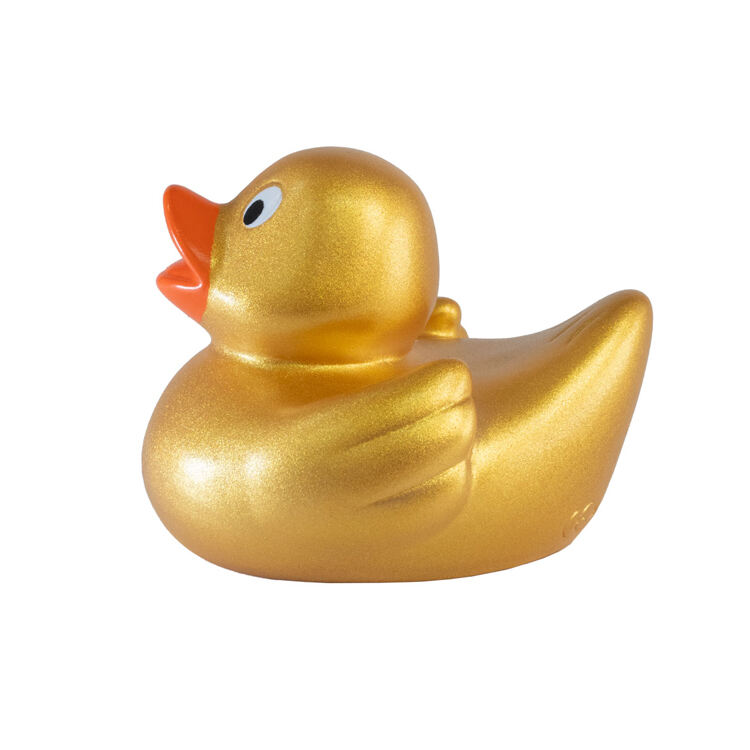Why Are Rubber Ducks a Timeless Bath Toy for Kids?
When you think of classic bath toys, one image almost always comes to mind: the cheerful yellow rubber duck floating alongside a child in a warm bubble bath. Rubber Ducks have been a part of childhood for generations, bringing smiles, laughter, and imaginative play to bathtime.
Despite the rise of modern, interactive bath toys with lights, sounds, and digital features, Rubber Ducks continue to hold their special place. They have not only survived decades of changing trends but have also become a cultural symbol of comfort, joy, and simple fun.
But what is it about Rubber Ducks that makes them such a timeless toy? In this article, we’ll explore the history, design, benefits, and enduring appeal of Rubber Ducks, as well as why parents and children still love them.
A Brief History of Rubber Ducks
The story of Rubber Ducks begins in the late 19th century, when rubber manufacturing became more advanced. Early versions of the toy were made from hard rubber and were not intended to float — they were more for teething and squeezing.
By the mid-20th century, softer vinyl materials became popular, allowing for the creation of hollow, buoyant Rubber Ducks that could float in the bath. These softer versions were safer, more appealing, and perfect for water play.
The design was further popularized in the 1970s, partly thanks to media appearances such as the famous “Rubber Duckie” song from Sesame Street, sung by the beloved character Ernie. Since then, Rubber Ducks have been a staple in homes around the world.
Simple Yet Perfect Design
One of the key reasons Rubber Ducks have remained popular is their simple but effective design. The classic shape is easy for little hands to grasp, the bright yellow color is cheerful and eye-catching, and the friendly smile invites imaginative play.
Their buoyant design means they float naturally on the water, bobbing along with the waves created during bathtime. The simplicity of Rubber Ducks is exactly what makes them so engaging — children can incorporate them into endless imaginary scenarios without the distraction of complex features.
Safety and Durability
For parents, safety is a top priority when choosing toys for their children. Rubber Ducks are generally made from non-toxic, BPA-free materials, and their smooth, rounded edges make them safe for even the youngest bathers.
They are also incredibly durable. A well-made Rubber Duck can last for years, surviving countless baths without fading, cracking, or losing its shape. This long lifespan not only makes them cost-effective but also means they can be passed down to younger siblings or even become keepsakes.
Encouraging Imaginative Play
Children are naturally imaginative, and bath time provides a unique environment for creativity. Rubber Ducks can become anything in a child’s mind: a sailor on an adventure, a race car driver zooming across the water, or a parent duck caring for her ducklings.
This kind of imaginative play is important for cognitive and emotional development. By inventing stories and roles for their Rubber Ducks, children practice communication skills, problem-solving, and empathy.

Supporting Sensory Development
Playing with Rubber Ducks in the bath is also a great way for children to engage their senses. The feel of the water, the smooth texture of the duck, and the sound of the duck squeaking (if it has a squeaker) all contribute to sensory exploration.
These experiences help develop fine motor skills as children grasp, squeeze, and move the ducks through the water. They also learn about cause and effect — for example, discovering that squeezing the duck underwater makes bubbles, or that pushing it will make it float away.
A Symbol of Comfort and Fun
Rubber Ducks are more than just toys; they have become symbols of comfort and joy for children. Bath time can sometimes be stressful for little ones, especially when they are very young or reluctant to get into the water.
Having a familiar Rubber Duck in the tub can help ease anxiety and turn bath time into a fun, positive experience. The bright color, friendly face, and familiar squeak all provide reassurance and help children relax.
The Collectible Side of Rubber Ducks
While they are most often thought of as children’s bath toys, Rubber Ducks also have a huge following among collectors. There are thousands of variations available today — from themed ducks dressed as superheroes or holiday characters to giant novelty ducks used for public events and art installations.
For some families, collecting Rubber Ducks becomes a shared hobby, with new ducks added for birthdays, holidays, or trips. This adds sentimental value to what might otherwise be seen as a simple toy.
Rubber Ducks in Popular Culture
Rubber Ducks have made countless appearances in television shows, movies, advertisements, and music. They are often used as a playful visual cue to represent innocence, happiness, or relaxation.
From the iconic Ernie song to giant floating Rubber Ducks touring harbors worldwide as art installations, these little toys have become cultural icons. Their image is instantly recognizable, and their association with fun and comfort resonates with people of all ages.
Eco-Friendly Choices in Modern Times
As parents become more conscious of the environmental impact of toys, there has been a shift toward eco-friendly Rubber Ducks made from natural rubber or recycled materials. These options are biodegradable, free from harmful chemicals, and often produced under sustainable manufacturing practices.
Eco-friendly Rubber Ducks provide the same joy as traditional ones but with the added benefit of reducing plastic waste and environmental harm. Many brands now proudly advertise their sustainable Rubber Ducks as part of their product line.
Affordable and Accessible
Another reason Rubber Ducks have stood the test of time is their affordability. They are inexpensive compared to many other toys, yet they offer endless play value. Their simple design means they are available almost anywhere — from supermarkets and toy stores to online marketplaces and gift shops.
Because they are so accessible, it’s easy for parents to replace a lost duck or add a new one to the collection without spending much money.
How Rubber Ducks Bring Families Together
Rubber Ducks aren’t just for children; they can bring joy to the whole family. Parents often join in bath time play, creating games or stories with the ducks. This shared playtime strengthens bonds between parent and child, turning a daily routine into an enjoyable family ritual.
For older siblings, helping a younger child play with Rubber Ducks can be a way to bond, teach, and interact. It fosters cooperation and builds memories that last long after the toys themselves are gone.
Why Rubber Ducks Will Remain a Classic
In a market filled with high-tech, battery-powered, and app-connected toys, Rubber Ducks stand out for their simplicity, charm, and lasting appeal. They meet all the key criteria parents look for: safe, durable, affordable, and fun.
Children love them because they are easy to hold, cheerful to look at, and endlessly adaptable to any kind of imaginary play. Parents love them because they make bath time smoother and more enjoyable.
With new designs and eco-friendly options constantly emerging, Rubber Ducks are likely to remain a beloved bath time companion for generations to come.
FAQ
When were Rubber Ducks first made?
The first Rubber Ducks appeared in the late 1800s, originally made from hard rubber and intended as chew toys rather than bath toys. Softer, floating versions became popular in the mid-20th century.
Are all Rubber Ducks safe for babies?
Not all Rubber Ducks are created equal. Parents should choose ducks made from BPA-free, phthalate-free materials, and avoid any with small detachable parts that could be a choking hazard.
Can Rubber Ducks go in the dishwasher?
Some Rubber Ducks can be cleaned in the dishwasher, but it’s best to check the manufacturer’s care instructions. Many can simply be washed with warm, soapy water and rinsed thoroughly.
Do Rubber Ducks mold inside?
If water gets trapped inside a hollow Rubber Duck, mold can form over time. To prevent this, choose a solid duck without a hole or regularly squeeze out the water and let it dry completely.
Why are Rubber Ducks yellow?
The bright yellow color is associated with ducklings and is visually stimulating for children. Yellow is also cheerful and easy to spot in the bath, making it a practical choice.
Are there eco-friendly Rubber Ducks?
Yes. Many companies now produce Rubber Ducks from natural rubber or recycled materials, offering a more sustainable choice for environmentally conscious families.
Table of Contents
- Why Are Rubber Ducks a Timeless Bath Toy for Kids?
- A Brief History of Rubber Ducks
- Simple Yet Perfect Design
- Safety and Durability
- Encouraging Imaginative Play
- Supporting Sensory Development
- A Symbol of Comfort and Fun
- The Collectible Side of Rubber Ducks
- Rubber Ducks in Popular Culture
- Eco-Friendly Choices in Modern Times
- Affordable and Accessible
- How Rubber Ducks Bring Families Together
- Why Rubber Ducks Will Remain a Classic
- FAQ




